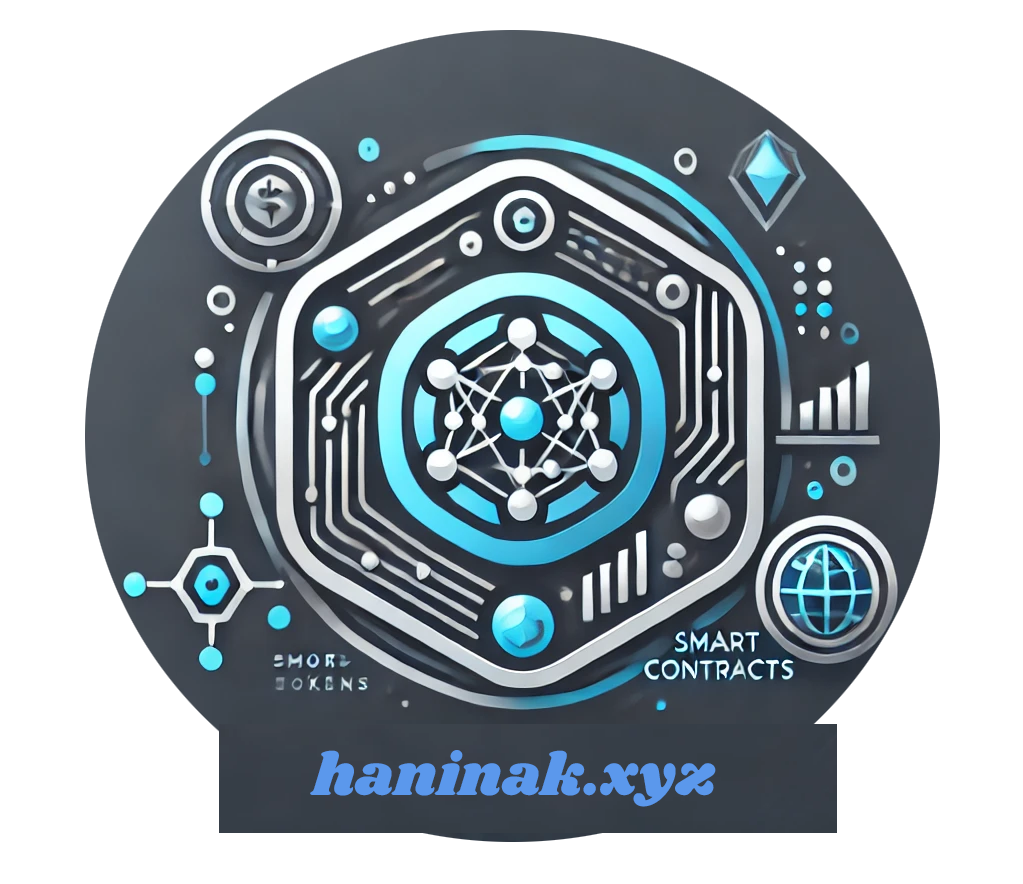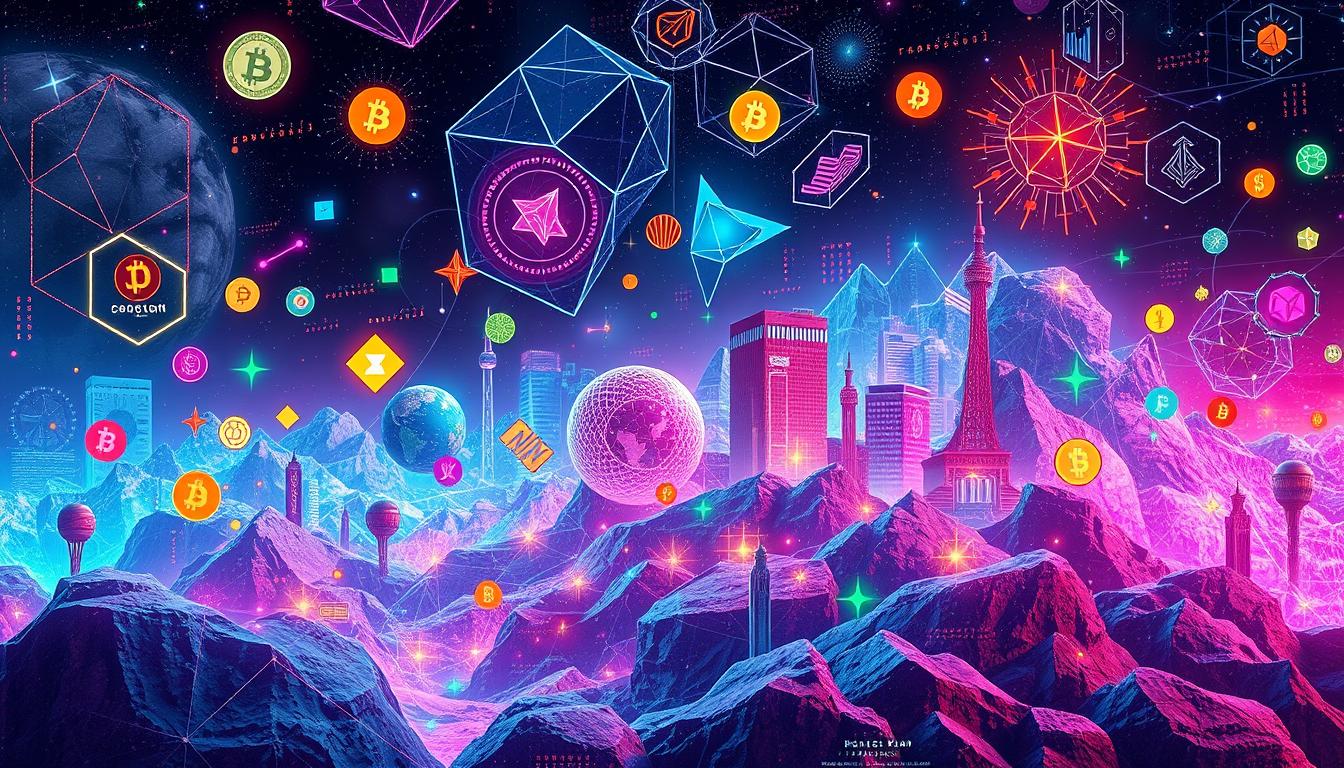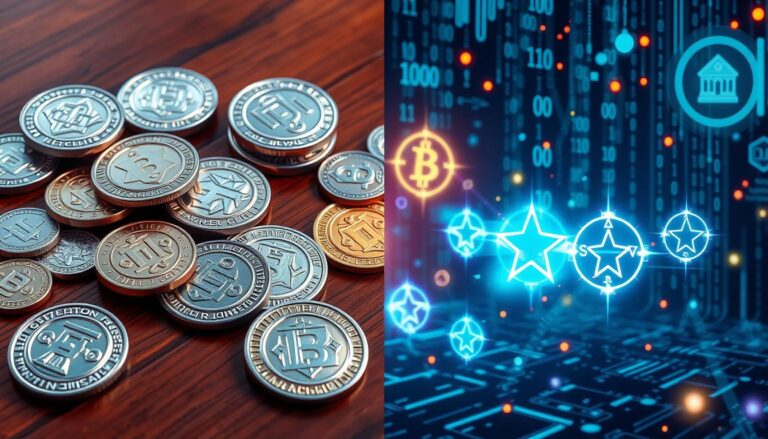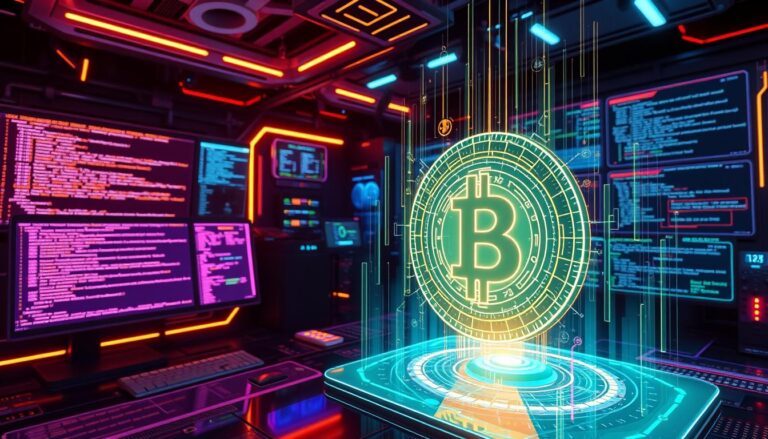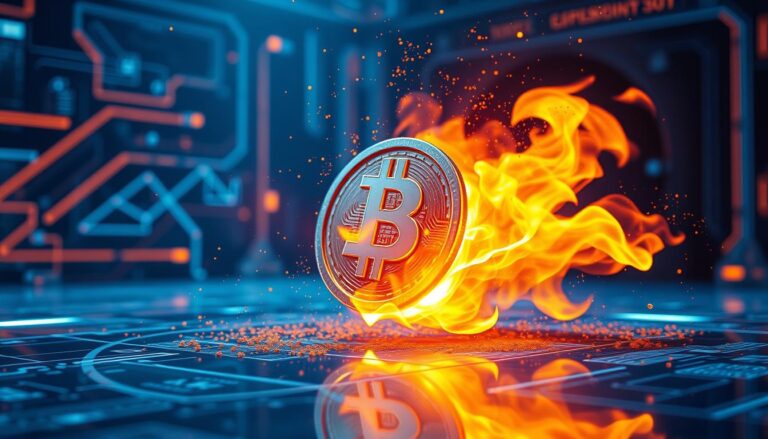What are Fungible Tokens and Non-Fungible Tokens (NFTs)?
In the fast-changing world of digital assets, we see two main types: fungible tokens and non-fungible tokens (NFTs). Fungible tokens, like Bitcoin and Ethereum, can be swapped for each other because they have the same value. On the other hand, NFTs are special digital items that show you own something unique on the blockchain.
Blockchain technology has opened up a new world of digital ownership. Now, people can buy and sell unique digital items, art, or even virtual land. In 2021, Beeple’s digital art piece “EVERYDAYS: The First 5000 Days” sold for $69.3 million at Christie’s, showing how popular NFTs have become.
Fungible tokens are important for making transactions and supporting DeFi apps. But NFTs are changing how we see and use digital assets. They make owning unique digital items possible, opening up new ways to own and value digital content.
Understanding the Fundamentals of Digital Tokens
Blockchain-based tokens have changed the digital world. They now include more than just simple cryptocurrencies. They cover a wide range of digital assets. At the heart of this change are key parts of token technology. These include smart contracts, consensus mechanisms, and cryptographic security.
The Evolution of Blockchain-Based Tokens
Blockchain technology has changed how we create, trade, and manage digital assets. Tokens, which are digital values, have grown from simple cryptocurrencies to many different digital assets. Each has its own special features and uses. This growth is thanks to new token standards and protocols, like ERC-20 for fungible tokens and ERC-721 for NFTs.
Key Components of Token Technology
- Smart Contracts: These digital agreements run on their own. They set the rules and conditions for token transactions. This ensures everything is transparent and happens automatically.
- Consensus Mechanisms: These are the rules that keep blockchain networks safe and secure. They include things like Proof-of-Work or Proof-of-Stake.
- Cryptographic Security: Tokens use advanced encryption and unique identifiers. This makes them very secure and proves their authenticity.
Token Standards and Protocols
Standardized token protocols have been key to digital tokens’ wide use and ability to work together. Protocols like ERC-20 for fungible tokens and ERC-721 for NFTs set the technical rules. They guide how tokens are created, moved, and managed on different blockchain platforms.

The token generation process creates new tokens on a blockchain. Each token gets a unique identifier and is linked to a specific blockchain address. This makes sure digital assets are traceable and secure. It also allows for new, innovative applications on blockchain technology.
The Technology of Tokens, its Techniques, and Everything Related to it
The digital token world is built on blockchain technology. It makes transactions secure and clear. Over time, token technology has grown, with new methods and improvements. These changes have changed how we deal with digital assets.
Minting is key in token tech, where new tokens are made and added to the blockchain. Smart contracts help in creating, sharing, and managing these tokens. Cryptographic hashing keeps token deals safe from tampering and fraud.
Keeping tokens safe is vital. Private keys and the blockchain’s unchangeable nature are crucial. Digital token wallets offer a safe place to store and manage digital assets. Token tech is flexible, used in many areas like digital art and identity checks.
New techniques are coming to tackle big issues like making tokens work better together and being kinder to the planet. These steps aim to make the token world more efficient, easy to use, and green.
| Token Technique | Description |
|---|---|
| Minting | The process of creating new tokens and adding them to the blockchain. |
| Smart Contracts | Self-executing agreements that facilitate the creation, distribution, and management of tokens. |
| Cryptographic Hashing | A fundamental aspect of blockchain protocols that ensures the security and integrity of token transactions. |
| Token Wallets | Digital storage solutions that allow users to hold, manage, and transact their token-based assets. |
| Proof-of-Stake | An alternative consensus mechanism that aims to reduce the environmental impact of token-based systems. |
The growth of token embeddings, token security, blockchain protocols, and cryptography has shaped the token world. It has opened up new ways to use tokens, changing the digital world.
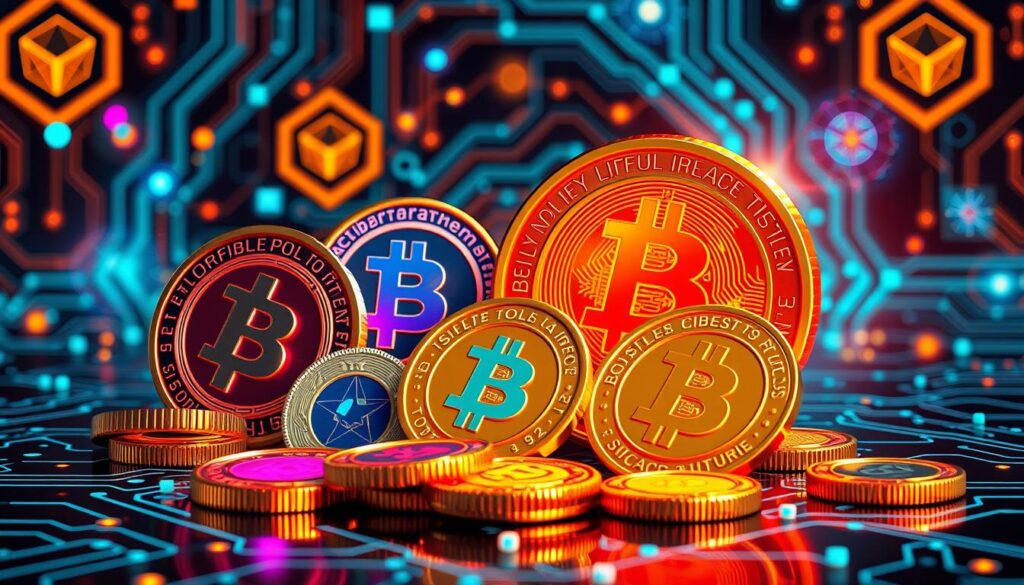
Exploring Fungible Tokens and Their Applications
In the fast-changing world of cryptocurrency, fungible tokens are key. They are used in many ways across different fields. These digital assets can be swapped for one another, making them vital in the decentralized finance (DeFi) world. They also make trading on cryptocurrency exchanges smooth.
Popular Fungible Token Examples
Some well-known fungible tokens are Bitcoin (BTC) and Ethereum (ETH). Also, stablecoins like Tether (USDT) and USD Coin (USDC) are popular. These tokens act as digital money and also unlock access to dApps and manage blockchain protocols.
Use Cases in DeFi and Trading
In DeFi, fungible tokens have changed the financial scene. They make lending, borrowing, and yield farming easier. They also make transactions smooth, letting users dive into token economics in DeFi. Plus, they’re the main way to trade on cryptocurrency exchanges, helping the cryptocurrency market grow.
Economic Impact of Fungible Tokens
Fungible tokens have made a big economic difference. They’ve opened up new markets and investment chances. They’ve also challenged old financial systems. With stablecoins, they’ve brought stability to the cryptocurrency world. As they keep growing, they’ll play a big role in the future of finance and the digital economy.
Non-Fungible Tokens (NFTs): Digital Uniqueness Explained
The world of digital art, collectibles, and gaming has changed a lot with NFTs. Unlike regular cryptocurrencies, each NFT is special and can’t be copied or split. This digital uniqueness has opened new doors for creators, collectors, and gamers to explore blockchain technology.
NFTs are smart contracts on blockchain platforms like Ethereum, mainly using the ERC-721 standard. They are unique tokens on the blockchain, proving the item’s authenticity and history. This is true for digital art, virtual gaming items, or collectibles.
In the digital art world, NFTs let artists sell their digital art as unique collectibles. They keep ownership and get royalties on future sales. This has changed the art market, letting digital creators earn in new ways.
In gaming, NFTs represent in-game assets like characters and virtual land. They give players real ownership and the chance to trade or sell items on platforms like OpenSea. This has created new ways for game developers to earn and for gamers to engage with their favorite games.
NFTs can also show ownership of real-world assets, like real estate. This makes it easier for investors to own parts of physical assets.
The NFT market has grown fast, from $82 million in 2020 to $17 billion in 2021. But in 2022, it dropped by over 90%. Still, the tech keeps improving, and NFTs could change many industries.
| NFT Adoption Milestones | Highlights |
|---|---|
| Rare Pepes | Emerged in 2016 on Bitcoin using the Counterparty protocol, known as “semi-fungible” NFTs centered around the Pepe the Frog meme. |
| Curio Cards | Credited as Ethereum’s first art NFT project utilizing the ERC-20 standard, launched in May 2017. |
| CryptoPunks | Emerged in June 2017 as a generative art project with 10,000 pixelated characters, one of the earliest and most iconic NFT projects. |
As digital art, collectibles, and NFT marketplaces grow, NFTs will unlock new possibilities. The future of this tech looks bright, with big impacts on many industries.
Challenges and Security Considerations in Token Economics
The world of tokens is growing fast but faces many challenges. These include worries about the environment, following the law, and dealing with the ups and downs of the crypto market.
Environmental Impact Concerns
One big worry is how tokens affect the environment. Some blockchain systems use a lot of energy, which harms the planet. To fix this, many are looking at new ways to run their networks that use less energy.
Regulatory Compliance Issues
The rules for tokens and cryptocurrencies are changing fast. It’s hard for developers and users to keep up. They need to follow laws about knowing who people are, stopping money laundering, and more. Working with lawyers and government officials is key to staying legal.
Market Volatility and Risk Factors
The crypto market can be very unpredictable. Prices can change quickly, and there’s a risk of scams. Developers and users need to be careful and understand these risks. They should also teach others about the dangers of the crypto market.
Overcoming these challenges is crucial for tokens to succeed. The industry needs to focus on being safe and following the rules. This way, tokens can grow and become more widely accepted.
| Challenge | Description |
|---|---|
| Environmental Sustainability | Energy-intensive blockchain networks and their carbon footprint |
| Regulatory Compliance | Navigating KYC, AML, and securities law regulations |
| Market Volatility | Sudden price fluctuations, market crashes, and potential for manipulation |
Conclusion
The world of tokens is changing fast. It’s making digital ownership and transactions more exciting. These new technologies open up possibilities we never thought possible.
As tokens grow, the industry faces challenges like rules, safety, and the environment. But the future looks bright. More people will use tokens, and they’ll work better with old financial systems.
Investors and users are interested in tokens that have done well in the past. It’s important to know how things like supply, fear, and what others think affect tokens. The industry needs to focus on these details to make tokens last and succeed.
